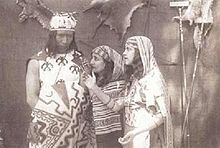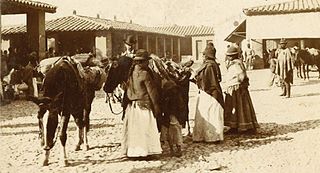
The Aymara or Aimara people are an indigenous people in the Andes and Altiplano regions of South America; about 2.3 million live in Bolivia, Peru and Chile. Their ancestors lived in the region for many centuries before becoming a subject people of the Inca in the late 15th or early 16th century, and later of the Spanish in the 16th century. With the Spanish American Wars of Independence (1810–25), the Aymaras became subjects of the new nations of Bolivia and Peru. After the War of the Pacific (1879–83), Chile annexed territory with Aymara population.

Andean music is a group of styles of music from the Andes region in South America.
The music of Bolivia has a long history. Out of all the Andean countries, Bolivia remains perhaps the most culturally linked to the indigenous peoples.

José María Arguedas Altamirano was a Peruvian novelist, poet, and anthropologist. Arguedas was an author of Spanish descent, fluent in the native Quechua language, gained by living in two Quechua households from the age of 7 to 11 - first in the indigenous servant quarters of his step-mother's home, then, escaping her "perverse and cruel" son, with an indigenous family approved by his father - who wrote novels, short stories, and poems in both Spanish and Quechua.

Quechua people or Quecha people, may refer to any of the indigenous people of South America who speak the Quechua languages, which originated among the indigenous people of Peru. Although most Quechua speakers are native to the country of origin, there are some significant populations living in Ecuador, Bolivia, Chile, Colombia and Argentina.

Spanish is the language that is predominantly understood and spoken as a first, or second language by nearly all of the population of the Republic of Argentina. According to the latest estimations, the population is currently greater than 45 million.
Katarism is a political movement in Bolivia, named after the 18th-century indigenous leader Túpac Katari.
Jorge Sanjinés is a Bolivian film director and screenwriter. He founded the production group Grupo Ukamau. He won the ALBA Prize for Arts in 2009.
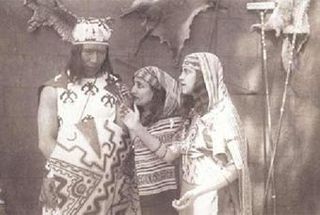
Wara Wara is a 1930 Bolivian feature film, directed by José María Velasco Maidana, combining historical drama and romance. The film was described as a "superproduction" by the press at the time.
José María Velasco Maidana was a Bolivian film director, composer, conductor, actor, painter and dancer. He was the estranged son of a Bolivian president. He was married to Texas painter, Dorothy Hood.
The Prophecy of the Lake is an unreleased and lost Bolivian silent feature film, directed by José María Velasco Maidana and completed in 1925.
Corazón Aymara is a 1925 lost Bolivian silent feature film, directed by Pedro Sambarino.
Julio Lencina is a cinematographer and director from Argentina who is known for his work in the cinematic world of the Andes.

Bolivians are people identified with the country of Bolivia. This connection may be residential, legal, historical or cultural. For most Bolivians, several of these connections exist and are collectively the source of their being Bolivian.
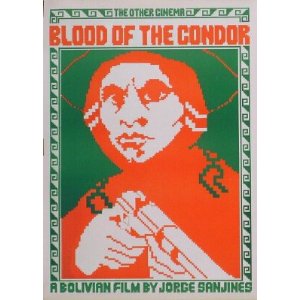
Blood of the Condor is a 1969 Bolivian drama film co-written and directed by Jorge Sanjinés and starring Marcelino Yanahuaya. The film tells the story of an indigenous Bolivian community receiving medical care from the Peace Corps-like American agency Cuerpo del Progreso which is secretly sterilising local women. The story, which was based on accounts by the indigenous people to the filmmaker, provoked an outrage in the public which led to a government investigation about the Peace Corps' actions in Bolivia, which ended in the expulsion of the agency from the country.

Indigenous peoples in Bolivia, or Native Bolivians, are Bolivian people who are of indigenous ancestry. They constitute anywhere from 40 to 70% of Bolivia's population of 11,306,341, depending on different estimates, and belong to 36 recognized ethnic groups. Aymara and Quechua are the largest groups. The geography of Bolivia includes the Andes, the Gran Chaco, and the Amazon Rainforest.
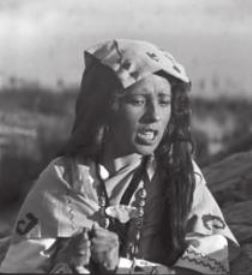
Ana Rosa Tornero (1907–1984) was a Bolivian writer, journalist, teacher, social reformer and a feminist. She published the first feminist magazine in Bolivia and was one of the founders of the first feminist organization in the country.
Luís Espinal Camps (1932–1980), also known by the nickname "Lucho" and by the Catalan name Lluís Espinal i Camps, was a Spanish Jesuit priest, poet, journalist, filmmaker, and film critic.

The Bolivian Civil War, also known as the Federal War was a civil war in Bolivia fought from 1898 to 1899. The war saw two factions, a conservative side supported by the political, economic and religious elite of the country with control of the armed forces and who defended a unitary state, and a liberal faction opposed to the policies set by the state and that intended to transform the country into a federation, with support of the peasantry, the indigenous peoples and small Catholic businesses.
